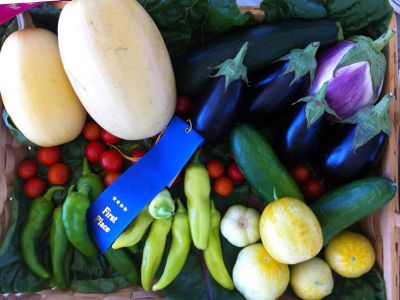Vegetable Show Planning
One of the biggest challenges of growing vegetables for show is harvesting them at peak maturity for the opening day of the vegetable show. Planning is essential to get the timing correct. This begins with picking up an entry book or finding the competition rules and requirements online. Here’s some additional tips to get you started:
Read the rules and requirements carefully. Look at the availability of classes and take note of all entry deadlines and requirements.Decide which type of vegetables you wish to show. Choose vegetables you’ve had success with in the past. Match these to the classes offered.Choose varieties with winning potential. When growing vegetables for show, F-1 disease-resistant hybrids produce the most consistent and best-looking entries. Steer clear of super-sized or odd shaped varieties. Select varieties which most closely resembles the size, shape, and color of vegetables displayed at your local grocery store.Plant at the correct time. Use the maturity date guidelines on the seed packets when sowing seeds. Stagger plantings to account for variations in maturity times due to weather and growing conditions.Create optimal growing conditions. Healthy plants produce the best show vegetables. Follow species guidelines for planting, watering, and fertilizing.Harvest as close to the entry deadline as possible. You want your entries looking fresh for the show. Handle your entries carefully to avoid bruises and blemishes.
Showing Vegetables at the Fair
If you’ve done your homework, you’ve discovered the online rules or entry book gives a brief explanation of how each entry is to be presented. Presentation and judging criteria are dependent upon the type of class. Vegetable shows generally offer three choices:
Size classes are judged solely on weight or length of the entry. For these classes, only the size of the entry is considered. Blemishes or oddly shaped vegetables are not marked down, but entries with visible damage or rotting will be disqualified. Largest pumpkin classes are notoriously competitive.Display classes are a mix of vegetables displayed in a particular fashion. These classes may call for a 3 foot (91 cm.) by 3 foot (91 cm.) gourd display or a mixed vegetable basket with a minimum of 12 varieties. Display classes are judged on presentation (design), variety of vegetables, and quality of the produce.Specimen classes represent a specific quantity of a single type of vegetable. Entries with the incorrect number or type of vegetable will be disqualified. Judging is based upon condition, uniformity, quality, and trueness-to-type.
Showing vegetables at the fair can be a lot of fun, but remember to keep winning in perspective. View competition as a learning experience and regardless of how you place, you’ll be the real winner!
